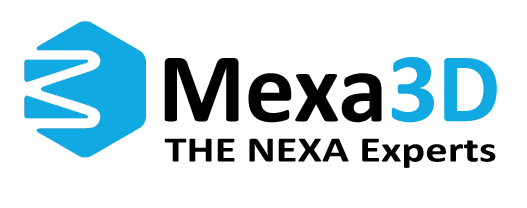Advisors and assistance
for the NEXA 3D printers
Learn more about resin 3D printing by downloading our technical guides.
3D printed molds: The ultimate guide
3D-printed tools refer to the use of additive manufacturing technology to produce customized tools for manufacturing or production processes. These tools may include jigs, fixtures, molds, and other devices that aid in the production of detailed parts or objects. Tools and molds are often produced using subtractive manufacturing techniques, which can be time-consuming and expensive, especially for complex or one-off designs. However, 3D printing makes it possible to create customized tools in less time and at lower cost, without compromising on precision or quality.
3D-printed tools for injection molding:
As 3D printing continues to develop, the technology is showing growing potential for various aspects of manufacturing, including the production of tools for injection molding. The use of 3D-printed tools for injection molding, while traditionally a complex and time-consuming task, can make prototyping, mold verification and small-batch production more efficient. However, it is also important to understand the extent to which injection molding and 3D printed tools can impact the additive manufacturing sector.
How to use 3D printing for rapid prototyping
Rapid prototyping is the rapid creation of a preliminary 3D model or part that can be used to evaluate the functionality or design of a product. Rapid prototyping processes often use computer-aided 3D design and 3D printing technology to create prototypes faster and more cost-effectively than conventional manufacturing methods. To use rapid prototyping with 3D printing, designers and printers need the right software tools and the best 3D printers that can print quickly and accurately while maintaining function.
Freeform Injection Molding: The best of additive manufacturing and injection molding
Additive manufacturing is undoubtedly an exciting technology for many reasons. One of these reasons is the possibilities it opens up - primarily because newer forms of technology offer unprecedented speeds, drastically reduced costs and unprecedented geometries. Does this mean that additive manufacturing will replace more traditional forms of production such as injection molding? Many people assume this, but these older forms of production still have their advantages. However, when combined with additive manufacturing, these technologies can really shine.
Examples of 3D-printed tools for manufacturing
3D-printed tools are a popular and growing trend in the industry, especially in the mechanical and transportation sectors. From customized levers to torque wrenches and socket wrenches, 3D printing technology has opened up a world of possibilities that have overturned conventional manufacturing methods. While some 3D printing processes replace conventional manufacturing, 3D printed tools can improve conventional manufacturing processes.
Integrating freeform injection molding into 3D printing workflows
There are two ways to use 3D printed tools that have been printed with XMOLD resin. You can quickly create mold halves that are compatible with thousands of commercially available injection molding materials, including high-performance reinforced materials. The ability to design, iterate and validate with the final production materials in hours rather than weeks is invaluable in any product development process.









